Retrospective: Ottawa’s Freedom Convoy
You’ve read all about the Freedom Convoy already. But have you spent any thought about what could be learned from it?
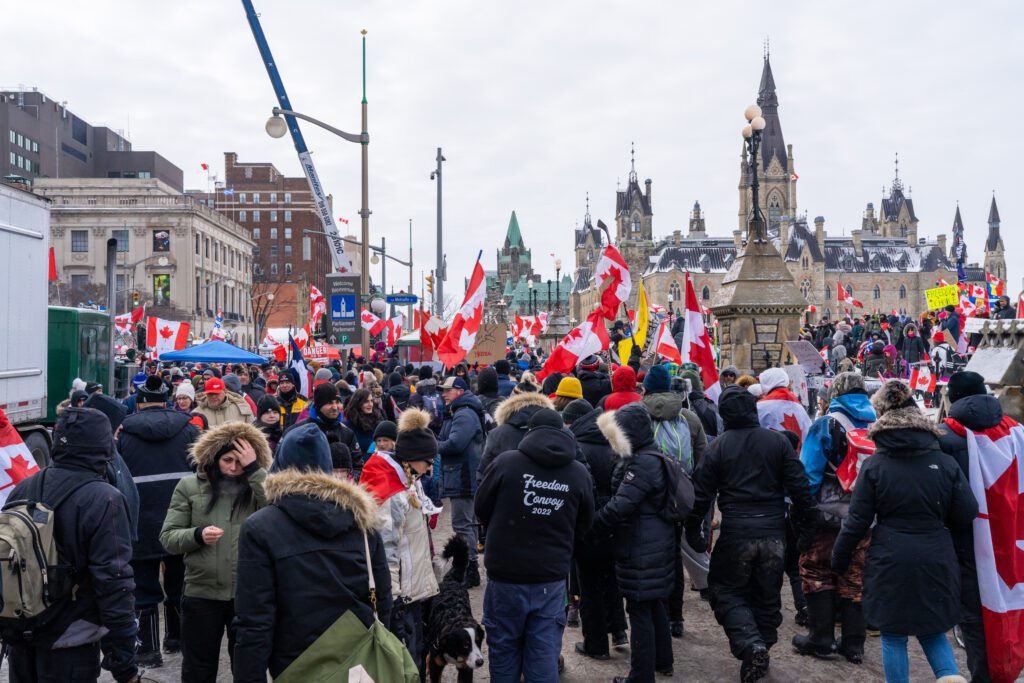
Source: Maksim Sokolov (Maxergon), Wikimedia Commons, licensed under Creative Commons Attribution-Share Alike 4.0 International
A lot has been written about Ottawa’s Freedom Convoy, which saw thousands of angry truckers and their supporters descend downtown to Parliament from all across the country on January 15th, 2022, to protest COVID mandates in general and the border requirements in particular, and occupied it until mid-February, when they were cleared by the police while the whole world was watching. A significant proportion of the coverage was disinformation by either side or the work of pundits who wrote from afar with little grasp of the events at play and similarly little objectivity, highlighting just how divisive the underlying issues were. Even now, months after the last protester was removed, the occupation is still the object of extensive media coverage and a never-ending deluge of vitriol, and the public struggles to decide whether the participants were champions of freedom or in league with Nazis.
For the purpose of this article, partisan issues shall be left aside to concentrate on analysis. Let’s focus on what happened, whether and to what extent the protest was successful, and what should have been done instead to make it right. This blog, after all, is all about civil disobedience as a means of protesting fundamental rights violations, and we shall look at this episode from a purely strategic standpoint.
What happened
Timeline of the Freedom Convoy protest on Wikipedia.
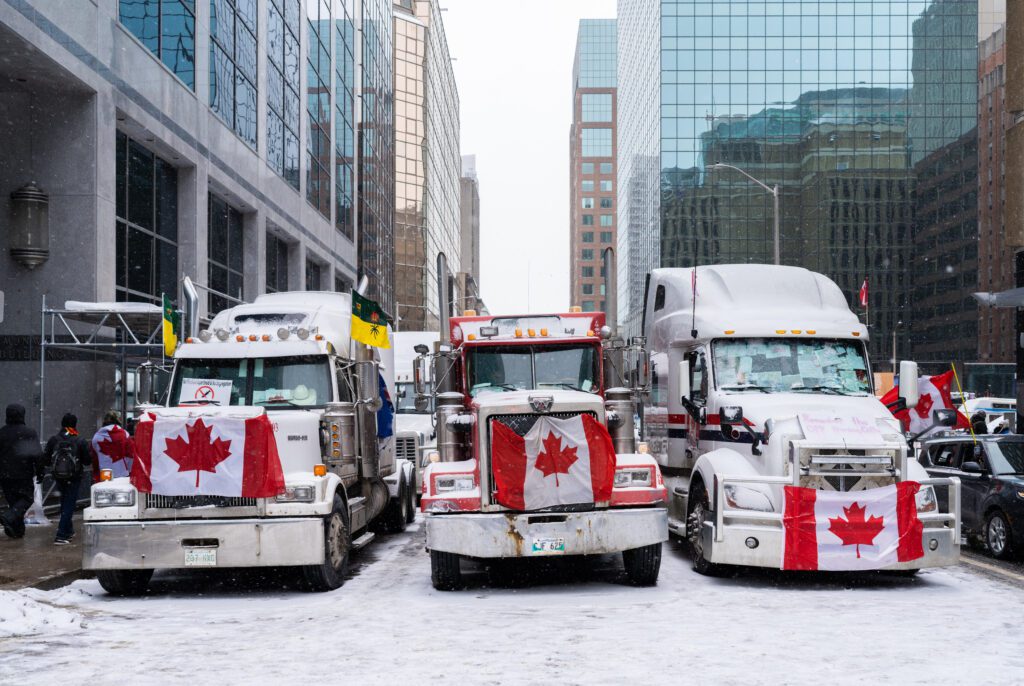
Accounts of the events vary greatly depending on who’s doing the telling, as outlined above. The protesters and their supporters see themselves as heroes. The federal government is hell bent on labelling the protesters terrorists. The Ottawa police has been walking on eggshells from the beginning, while Ottawa residents felt under siege by an occupying force. These are matters of perspective, so let’s move on with actual events.
The planning started in mid-December the previous year, when a sizeable group of Canadian truckers, fed up with federal vaccine and quarantine requirements at the border, decided to take the matter all the way to Ottawa with the intention of having a long conversation on the topic with their elected representatives, and wrote down their stance in a memorandum of understanding calling for the end of the relevant federal COVID mandates. Their demands were rather broad, and of questionable legality, but made with the understanding that legal matters are often decided with boots on the ground (or in this case, tires).
The convoy rallied thousands of participants and vehicles from all across the country, and converged on Parliament in Ottawa on January 28th, with the intention of staying until their demands were met. Ottawa’s police force would later admit to have been unprepared for a protest of this magnitude, even though it had advance warning of the event. And even long after the facts, it remains unclear just how many people, cars, and trucks took part at peak attendance, estimates being broad and wildly contradictory.
Those expecting a peaceful weekend protest were in for a shock. The protest drew so much support that donations started pouring in via GoFundMe, which raised about 10 million dollars until terminating the campaign under pressure from the federal government. The truckers used a substantial portion of that amount to buy supplies, starting with fuel, which allowed them to entrench themselves in downtown Ottawa, to the delight of supporters and the dismay of residents.
The police initially exercised restraint, overwhelmed by the scale of the demonstration. Eventually, under pressure from all levels of government, it started engaging in questionable tactics to lift the siege, such as confiscating fuel, leading to a game of cat and mouse between officers and protesters. Frustration grew on all sides, and so did calls to have the demonstrators forcibly removed. Ottawa residents even staged counterprotests in response, in despair over government inaction.
This would not last. The federal government most controversially answered by invoking the Emergencies Act on February 14th (happy Valentine’s Day) in an attempt to remove the occupiers by force. The government’s rhetoric was that the protest was fuelled by foreign nationals funding an insurrection (a claim that would be proven false) and that freezing the organisers’ bank accounts was necessary to put an end to it—short of calling upon the military to intervene.
The police would start cracking down on protesters on February 18th, using methods that would draw consternation across the world, such as allegedly trampling some protesters with horses. Protest organisers were arrested would be charged with multiple criminal offences. Protesters were forcibly dispersed in the coming days and vehicles towed away. It was essentially over by February 21st.
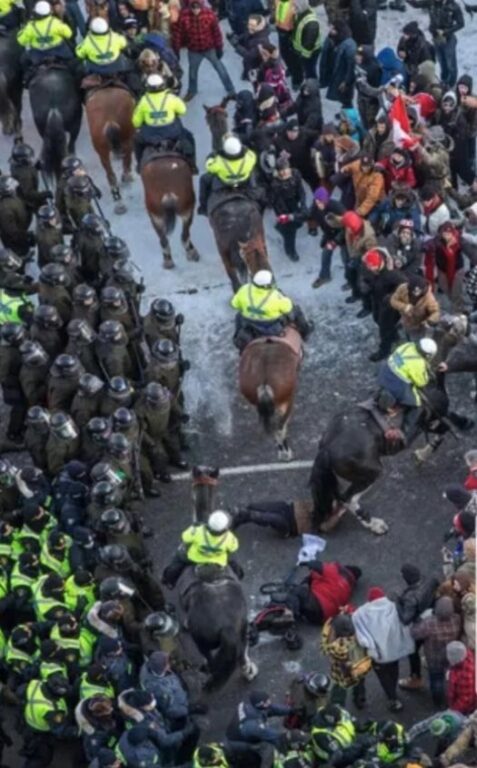
Or some would say it was only the beginning; the aftermath is discussed at length below.
Message
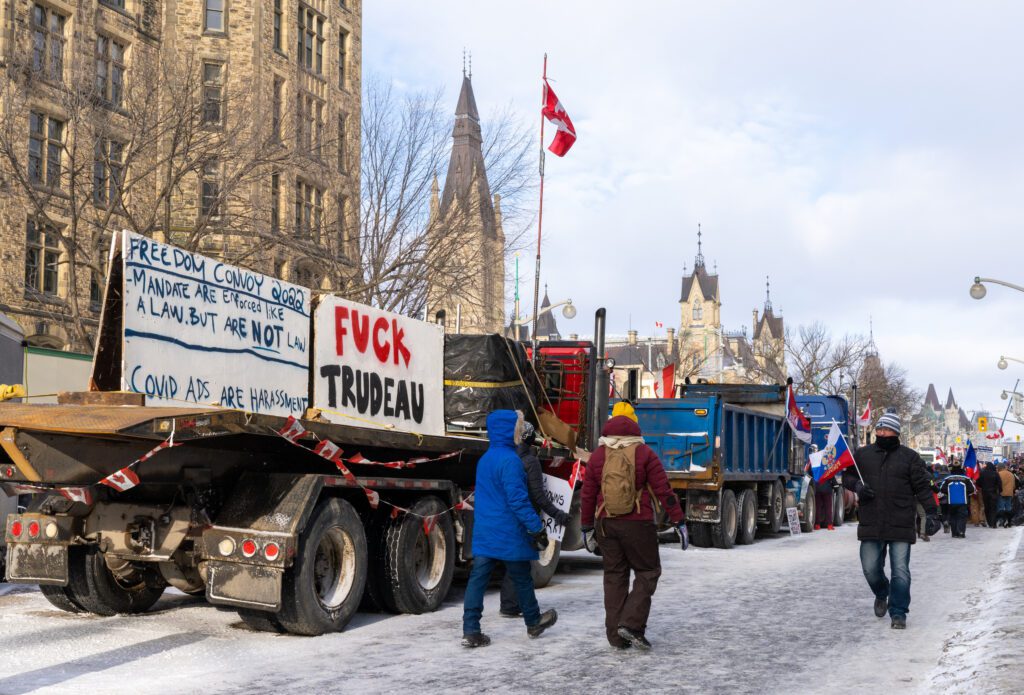
Let’s start with the protesters, whose demands started with the revocation of the vaccine mandate at the border but swelled to include all COVID mandates countrywide. Even at this stage there were a few slip-ups, such as the organisers’ dubious grasp of the Canadian legal system making analysts frown, which made it easier for the federal government to depict the protesters as clueless agitators such as those of the January 6th Capitol insurrection in the US one year prior. Ironically, the movement could have greatly benefited from a lawyer at the very beginning, which could have significantly improved their image. A protest is usually fought in the court of public opinion, so public relations matter tremendously.
Also, a drawback of movements as opposed to proper organisations is that they make controlling the message difficult, since anybody can just walk in and join, and indeed some people belonging to a certain basket of deplorables were sighted alongside the protesters. Having a strategy to confront those elements might have helped thwarting allegations that the movement drew radical elements such as neo-Nazis and neo-Confederates, which would hurt the protesters’ standing with the public at a crucial moment.
On the bright side, the movement embracing the Canadian flag as a symbol gave it a sense of identity like that of the Yellow Vests in France, which champions the interests of the proletariat, and made it difficult to attack as unpatriotic.
As for the federal government, it committed serious blunders in its depiction of the protesters, with the Prime Minister going as far as calling them a fringe minority with unacceptable views, which would tickle lots of Canadians the wrong way and even became a rallying cry for anyone who either felt sympathy for the protesters or frustration with the COVID mandates. I just wish politicians learned from such incidents and watched what they’re saying, instead of badmouthing their opponents in a way that is so obviously going to backfire.
Likewise, claiming them to be insurrectionists trying to overthrow the government just beggared belief; to make another parallel with the January 6th insurrection at the Capitol, the protesters then didn’t spend weeks camping outside in Washington waiting for a good moment to barge in because this is completely absurd. While those claims may have swayed public opinion at the moment, they were obviously going to backfire as tempers cooled and public scrutiny started. In this respect, the government shot itself in the foot and ruined its credibility in the long run.
By the way, unprecedented wartime measures and police brutality didn’t sit well with the public in general and even had diplomatic repercussions. It sent the message that Canada is just another banana republic, at a time it was already under fire following discoveries of mass graves at former residential schools; talk about committing self-injury. Meeting with the protesters, even in a purely hypocritical fashion, would have made a much better impression, even if it led to using force anyway down the road, because it would have made the government look civilised and, at least in appearance, acting in good faith.
Tactics
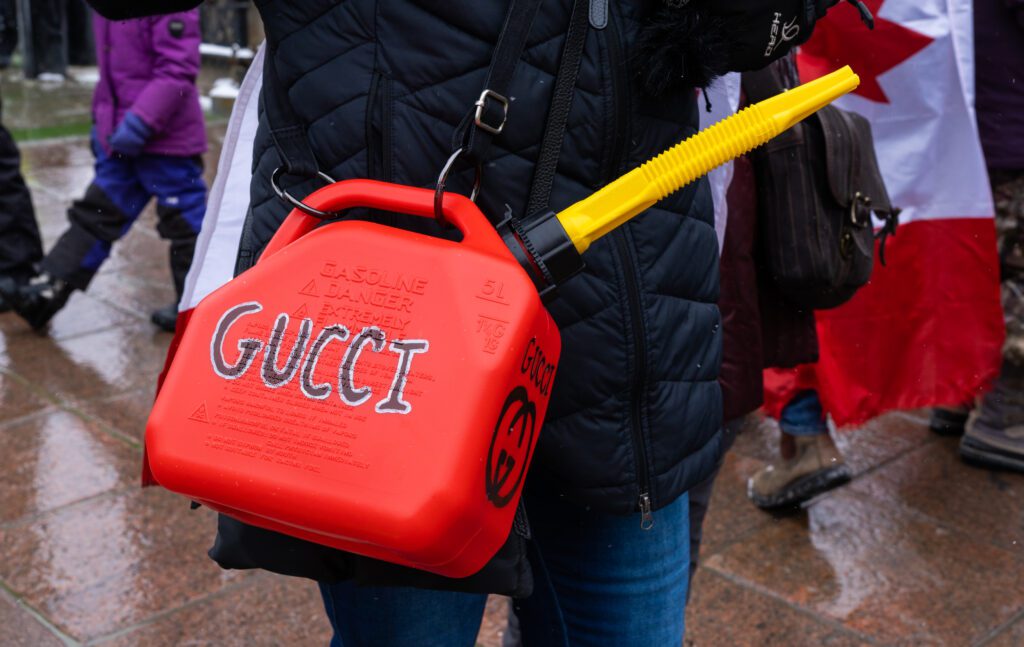
The police’s one overwhelming strategic blunder was not to have stopped the convoy right at the edge of the city when it had the chance; granted, this would have been illegal, but that’s never stopped the police before and it would resort to illegal methods eventually. Just like the Washington DC police was taken by surprise when the insurrectionists struck the Capitol on January 6th, so was the Ottawa police when the Convoy swarmed downtown Ottawa. Law enforcement doesn’t monitor social media closely enough and higher-ups do not take those threats seriously even when reported, which allows movements operating in a bubble to gather large numbers and move on their target virtually unimpeded. The police would not make that mistake a second time when Rolling Thunder descended on Ottawa in April.
Speaking of law enforcement, former RCMP and military officers have been reported acting as consultants, working alongside the organisers to impede the police’s efforts. Their most reported contribution may have been to swap gasoline and water containers in order to frustrate police officers’ efforts at confiscating fuel. But even beyond that, they proved crucial at implementing logistics; without planners turning the convoy into a makeshift camp, and establishing supply and communication lines, the protest would not have lasted long.
The protesters’ ultimate shortcoming, however, was on the first night of the police crackdown. The planners must have realised getting physical with the police was inevitable and, while this prospect may be unpalatable to some, should have come up with a plan to sell every square foot of ground as expensively as possible. The police’s trump card turned out to be horses, which was both predictable and thwartable; without their spearhead, the riot police on foot would have been at a disadvantage. One simple way would have been to use fireworks, which could have driven the horses into a panic; granted, it would have been illegal, but that’s never stopped civil disobedience before, and if successful might have convinced the government to come to the negotiating table.
Was it successful?
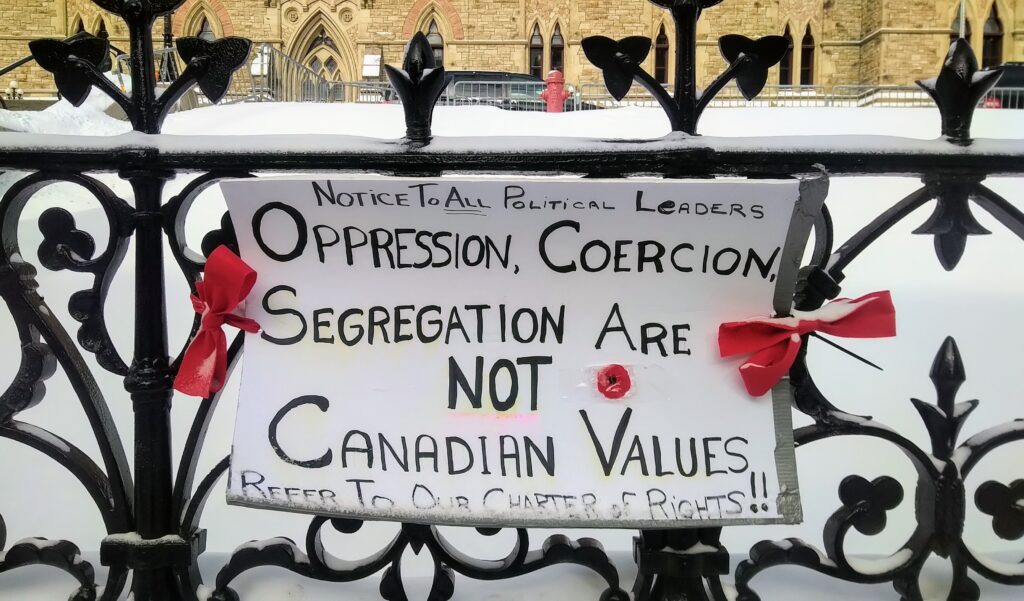
In the strictest sense it was a failure. Its primary objective was to strike down the federal COVID mandates and yet they remain standing to this day.
Looking at it laterally, however, the Freedom Convoy was instrumental in striking down the provincial mandates countrywide, which were a secondary objective and arguably more significant still than the federal mandates, whose reach is rather limited. It also inspired similar protests across the world, and sparked a new civil rights movement in the country, getting ordinary citizens involved in politics that would otherwise never have contemplated such a move.
And while the federal government has won the battle of Ottawa, it may yet lose the war. If nothing else, its victory came at a significant financial cost and the bill keeps growing. The polemic and public inquiries surrounding the invocation of the Emergencies Act will haunt it for months, perhaps years to come, and politicians’ heads may yet roll as a result. “Fuck Trudeau” has become a most fashionable slogan and the Liberal Party of Canada’s popularity is tanking. The protests’ leaders have become the movement’s martyrs and judicial proceedings against them do not fare well. Politicians take flak as hostile protesters hound them wherever they go. Scathing criticism even follows the Prime Minister abroad. And legal challenges abound. That doesn’t look like victory to me, but like a political and judicial quagmire of the government’s own making.
Join Regime Change in BC on Facebook. And please read about civil disobedience before you do.
Discover more from Rulebreakers
Subscribe to get the latest posts sent to your email.



